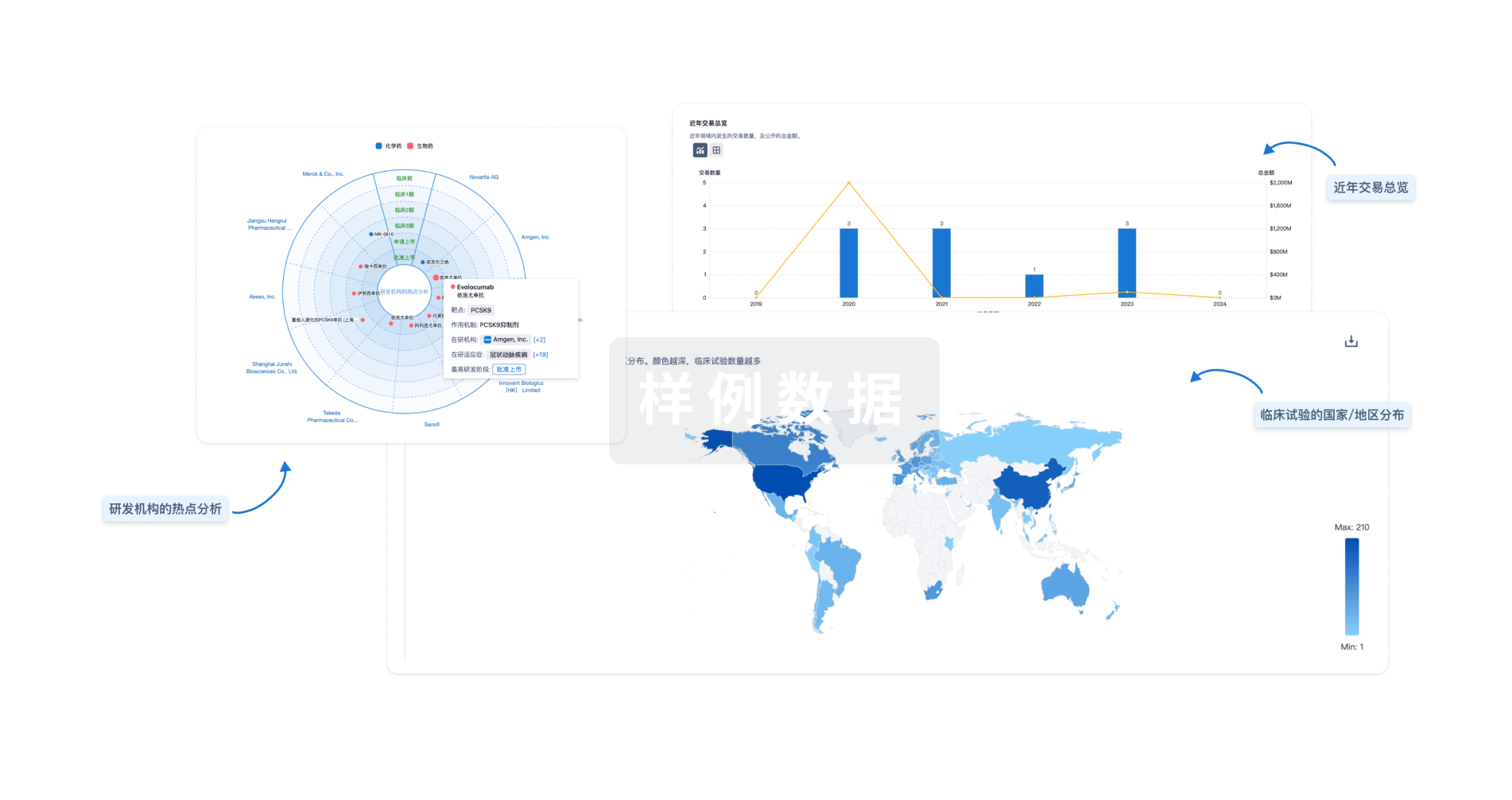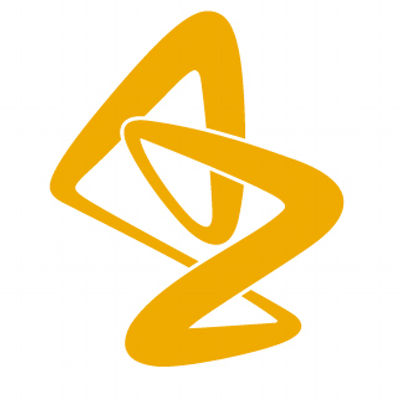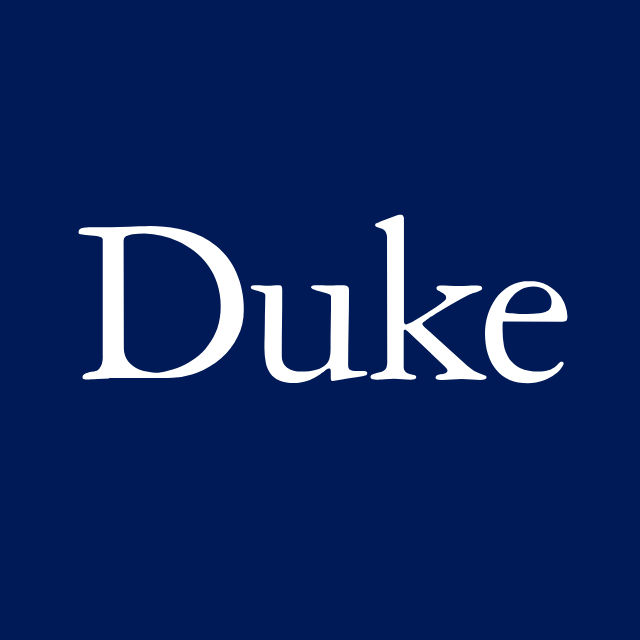预约演示
更新于:2025-05-07
EGFR
更新于:2025-05-07
基本信息
别名 EGFR、Epidermal growth factor receptor、epidermal growth factor receptor (avian erythroblastic leukemia viral (v-erb-b) oncogene homolog) + [9] |
简介 Isoform 2 may act as an antagonist of EGF action.
Receptor tyrosine kinase binding ligands of the EGF family and activating several signaling cascades to convert extracellular cues into appropriate cellular responses (PubMed:10805725, PubMed:27153536, PubMed:2790960, PubMed:35538033). Known ligands include EGF, TGFA/TGF-alpha, AREG, epigen/EPGN, BTC/betacellulin, epiregulin/EREG and HBEGF/heparin-binding EGF (PubMed:12297049, PubMed:15611079, PubMed:17909029, PubMed:20837704, PubMed:27153536, PubMed:2790960, PubMed:7679104, PubMed:8144591, PubMed:9419975). Ligand binding triggers receptor homo- and/or heterodimerization and autophosphorylation on key cytoplasmic residues. The phosphorylated receptor recruits adapter proteins like GRB2 which in turn activates complex downstream signaling cascades. Activates at least 4 major downstream signaling cascades including the RAS-RAF-MEK-ERK, PI3 kinase-AKT, PLCgamma-PKC and STATs modules (PubMed:27153536). May also activate the NF-kappa-B signaling cascade (PubMed:11116146). Also directly phosphorylates other proteins like RGS16, activating its GTPase activity and probably coupling the EGF receptor signaling to the G protein-coupled receptor signaling (PubMed:11602604). Also phosphorylates MUC1 and increases its interaction with SRC and CTNNB1/beta-catenin (PubMed:11483589). Positively regulates cell migration via interaction with CCDC88A/GIV which retains EGFR at the cell membrane following ligand stimulation, promoting EGFR signaling which triggers cell migration (PubMed:20462955). Plays a role in enhancing learning and memory performance (By similarity). Plays a role in mammalian pain signaling (long-lasting hypersensitivity) (By similarity).
(Microbial infection) Acts as a receptor for hepatitis C virus (HCV) in hepatocytes and facilitates its cell entry. Mediates HCV entry by promoting the formation of the CD81-CLDN1 receptor complexes that are essential for HCV entry and by enhancing membrane fusion of cells expressing HCV envelope glycoproteins. |
关联
1,087
项与 EGFR 相关的药物靶点 |
作用机制 EGFR拮抗剂 |
在研机构 |
原研机构 |
在研适应症 |
非在研适应症- |
最高研发阶段批准上市 |
首次获批国家/地区 中国 |
首次获批日期2025-01-24 |
作用机制 EGFR T790M抑制剂 |
在研机构 |
原研机构 |
非在研适应症 |
最高研发阶段批准上市 |
首次获批国家/地区 中国 |
首次获批日期2025-01-14 |
作用机制 EGFR19外显子缺失突变抑制剂 [+1] |
在研机构 |
原研机构 |
非在研适应症 |
最高研发阶段批准上市 |
首次获批国家/地区 中国 |
首次获批日期2024-11-15 |
6,294
项与 EGFR 相关的临床试验NCT04933422
Phase 1 Study Evaluating the Safety, Pharmacokinetics, Pharmacodynamics and Clinical Effects of CM93 in Subjects With Recurrent Glioblastoma (rGBM) Characterized by Epidermal Growth Factor Receptor (EGFR) Mutation or Amplification
This is a first-in-human study of CM93, an oral investigational drug, in adults with Epidermal Growth Factor Receptor-modified glioblastoma. The study is designed in three parts consisting of a dose-escalation phase, a dose-expansion phase and a window-of-opportunity surgical trial. The trial objectives are to evaluate the safety, pharmacokinetics, pharmacodynamics and clinical effects of CM93 in this patient population.
开始日期2027-01-01 |
申办/合作机构 |
NCT04903795
A Phase I Study of hEGFRvIII-CD3 Bi-scFv (BRiTE) in Patients With WHO Grade IV Malignant Glioma
This phase 1 study will evaluate a novel hEGFRvIII-CD3-biscFv Bispecific T cell engager (BRiTE) in patients diagnosed with pathologically documented World Health Organization (WHO) grade 4 malignant glioma (MG) with an EGFRvIII (epidermal growth factor receptor variant III) mutation (either newly diagnosed or at first progression/recurrence). The primary objective is to evaluate the safety of BRiTE in such patients.
开始日期2026-12-01 |
申办/合作机构 |
NCT05183048
Comparison of 89Zr Panitumumab and (18)F-Fluorodeoxyglucose to Identify Head and Neck Squamous Cell Carcinoma
This pilot clinical study will investigate if Zirconium-89 (89Zr) panitumumab- Positron Emission Tomography/ Magnetic Resonance Imaging (PET/MRI) imaging can more accurately determine size and location of primary tumors compared to standard of care Fludeoxyglucose (18F-FDG) -PET/MRI in newly diagnosed patients with head and neck squamous cell carcinoma (HNSCC) who are undergoing surgical resection. This study is for imaging purposes only and is not a treatment study. The results of this study will not change the clinical treatment plan.
开始日期2025-12-31 |
100 项与 EGFR 相关的临床结果
登录后查看更多信息
100 项与 EGFR 相关的转化医学
登录后查看更多信息
0 项与 EGFR 相关的专利(医药)
登录后查看更多信息
84,588
项与 EGFR 相关的文献(医药)2025-12-31·Renal Failure
The role of the estimated glomerular filtration rate and body roundness index in the risk assessment of uric acid-lowering therapy-resistant gout in U.S. adults: evidence from the National Health and Nutrition Examination Survey (2007–2018)
Article
作者: Zhu, Mengyuan ; Deng, Qian ; Li, Meihui ; Liu, Nian ; Wang, Xingqiang ; Zhang, Ling ; Yan, Weitian ; Peng, Zining
2025-12-31·Emerging Microbes & Infections
A KSHV-targeted small molecule efficiently blocks SARS-CoV-2 infection via inhibiting expression of EGFR and Cyclin A2
Article
作者: Zhang, Daizhou ; Du, Shujuan ; Huang, Qingye ; Wei, Fang ; Jia, Yuping ; Dong, Zhongwei ; Zhang, Yulin ; Wang, Yuyan ; Wang, Xinyu ; Zhu, Caixia ; Cai, Qiliang ; Hu, Gaowei
2025-12-31·Renal Failure
Development and validation of multi-center serum creatinine-based models for noninvasive prediction of kidney fibrosis in chronic kidney disease
Article
作者: Fan, Qiu-Ling ; Peng, Ai ; Wu, Le-hao ; Yu, Chen ; Zhao, Dan ; Zhang, Ying-ying ; Zhang, Xiao-qin ; Niu, Jian-Ying ; Luo, Cheng-gong ; Tang, Tian
9,535
项与 EGFR 相关的新闻(医药)2025-05-05
SAN DIEGO, CA, USA I May 05, 2025 I
Janux Therapeutics, Inc.
(Nasdaq: JANX) (Janux), a clinical-stage biopharmaceutical company developing a broad pipeline of novel immunotherapies by applying its proprietary technology to its Tumor Activated T Cell Engager (TRACTr) and Tumor Activated Immunomodulator (TRACIr) platforms, today announced the initiation of Phase 1b expansion studies in the ongoing
ENGAGER-PSMA-01
trial.
ENGAGER-PSMA-01 is a first-in-human, open-label, multicenter Phase 1 clinical trial designed to evaluate the safety, tolerability, pharmacokinetics, pharmacodynamics, and preliminary efficacy of JANX007 administered as monotherapy or in combination in adult patients with advanced metastatic castration-resistant prostate cancer (mCRPC).
In December 2024, Janux reported positive interim clinical data from the Phase 1a dose escalation portion of the trial in 16 mCRPC patients with a median of four prior lines of therapy. At that time, the median radiographic progression-free survival (rPFS) reported was 7.4 months for all 16 patients.* As of April 21, 2025, updated results** have been achieved in the same 16 patients supporting the initiation of the Phase 1b expansion studies:
*8/16 patients were noted as in-progress in the December 2024 reported results.
**rPFS results based upon Kaplan-Meier estimate.
In addition, Janux has selected a CRS-mitigation strategy to support the initiation of the Phase 1b expansion studies that is designed to maintain the CRS profile reported in December.
The first Phase 1b expansion study will enroll taxane-naïve mCRPC patients and is designed to generate additional safety and efficacy data in this first and second line (1L/2L) patient population. This study will assess JANX007 monotherapy at two dose regimens (0.3/2/6mg and 0.3/2/9mg) with dosing administered once weekly or once every two weeks in mCRPC patients who have progressed on or after novel hormonal therapy (NHT).
“Initiation of the taxane-naïve study marks an important step as we begin to evaluate JANX007 in earlier-line mCRPC patient populations,” said Zachariah McIver, D.O., Ph.D., Chief Medical Officer of Janux. “While therapeutic options for mCRPC have expanded, there remains a significant need for novel, non-chemotherapeutic approaches.”
Janux plans to initiate three additional Phase 1b expansion studies, evaluating:
“Improved efficacy and durability of responses has been observed by other prostate cancer drugs and TCEs when moving into earlier lines of therapy. There are also indications that safety with TCEs improve in earlier lines of therapy where disease burden is lower. We believe that these observations, coupled with the data seen in our Phase 1a dose escalation in later line patients, strongly support our decision to develop JANX007 in earlier lines of therapy,” said David Campbell, Ph.D., President and CEO of Janux.
Additional data from JANX007 and JANX008 will be presented at future Janux events in the second half of 2025. Separately, Janux will host an R&D Day in mid-2025 highlighting product candidates identified from its preclinical pipeline to move into clinical trials.
Janux’s TRACTr and TRACIr Pipeline
Janux’s first clinical candidate, JANX007, is a TRACTr that targets prostate-specific membrane antigen (PSMA) and is being investigated in a Phase 1 clinical trial in adult patients with metastatic castration-resistant prostate cancer. Janux’s second clinical candidate, JANX008, is a TRACTr that targets epidermal growth factor receptor (EGFR) and is being studied in a Phase 1 clinical trial for the treatment of multiple solid cancers including colorectal carcinoma, squamous cell carcinoma of the head and neck, non-small cell lung cancer, renal cell carcinoma, small cell lung cancer, pancreatic ductal adenocarcinoma and triple-negative breast cancer. We are also generating a number of additional TRACTr and TRACIr programs for potential future development, some of which are at development candidate stage or later. We are currently assessing priorities in our preclinical pipeline.
About Janux Therapeutics
Janux is a clinical-stage biopharmaceutical company developing tumor-activated immunotherapies for cancer. Janux’s proprietary technology enabled the development of two distinct bispecific platforms: TRACTr and TRACIr. The goal of both platforms is to provide cancer patients with safe and effective therapeutics that direct and guide their immune system to eradicate tumors while minimizing safety concerns. Janux is currently developing a broad pipeline of TRACTr and TRACIr therapeutics directed at several targets to treat solid tumors. Janux has two TRACTr therapeutic candidates in clinical trials, the first targeting PSMA is in development for prostate cancer, and the second targeting EGFR is being developed for colorectal carcinoma, squamous cell carcinoma of the head and neck, non-small cell lung cancer, renal cell carcinoma, small cell lung cancer, pancreatic ductal adenocarcinoma and triple-negative breast cancer. For more information, please visit
www.januxrx.com
and follow us on LinkedIn.
SOURCE:
Janux Therapeutics
临床1期免疫疗法临床结果
2025-05-05
点上方蓝字“ioncology”关注我们,然后点右上角“…”菜单,选择“设为星标”ELCC 2025 微专辑扫描二维码可查看更多内容在2025年欧洲肺癌大会(ELCC)上,ESMO前任主席、瑞士洛桑大学医院肿瘤科主任Solange Peters教授以“双特异性抗体和T细胞衔接器:对抗免疫荒漠”为题发表专题报告。《肿瘤瞭望》就这些创新疗法及当前免疫治疗领域的热点问题对Peters教授进行了独家专访。请谈谈双特异性抗体和T细胞衔接器在改善肺癌治疗方面的潜力。Dr. Peters:双特异性抗体同时针对两个靶点,令人惊讶的是,其疗效竟然优于两种单抗联合使用。需要记住,双特异性抗体的定义很广泛,这类药物靶向两种肿瘤相关抗原,但大多靶向两个免疫检查点,通过抑制或刺激免疫反应发挥抗肿瘤作用。例如,双特异性抗体的两个靶点可能是PD-1/PD-L1与CTLA-4,可能是VEGF与PD-1。这是一种免疫反应的调节剂(刺激或抑制)。2025 ELCC发布了首批靶向PD-1和LAG-3两种通路的双特异性抗体的数据(摘要7MO:Tobemstomig/含铂化疗对比帕博利珠单抗/含铂化疗一线治疗局部晚期或转移性NSCLC患者的II期临床研究)。我们希望联合PD-1和LAG-3治疗,理想情况下是使用双特异性抗体,或使用两种药物分别治疗。但罗氏研发的双特异性抗体Tobemstomig联合化疗对比帕博利珠单抗/化疗是阴性结果,所以以上概念可能并不成立。 目前尚不清楚CTLA-4/PD-1双特异性抗体为何比CTLA4单抗联用PD-1单抗更有效,可能是同步靶向两个免疫检查点可以增强肿瘤内部的协同效应,从而有效整合免疫反应的各个组成部分(向肿瘤细胞抗原呈递的细胞、T细胞衔接器等),我们希望这种机制产生作用,但尚缺乏研究数据支持。T细胞衔接器是不同作用机制的药物,它通过结合CD3激活T细胞,促进其细胞增殖并分泌细胞因子。这是T细胞的启动过程。T细胞衔接器不依赖于预先存在的免疫反应。虽然T细胞衔接器可能引发一些副作用,例如细胞因子释放综合征(CRS)和免疫效应细胞相关神经毒性综合征(ICANS),但它为针对性治疗策略带来了巨大的希望,通过激活T细胞并招募免疫细胞大军来攻击肿瘤。制药行业正在针对这类药物进行大量研发,临床试验覆盖多种肿瘤和疾病不同阶段,其中200个双特异性抗体正在II期临床试验阶段。(上下滑动可查看)Dr. Peters: My name is Solange Peters. I am Director of Oncology at the University Hospital of Lausanne in Lausanne, Switzerland.First of all, it is quite surprising to see how a bispecific with two targets might potentially be more active than two drugs together. Remember, bispecifics define many things. You could target two tumor-associated antigens, but most of these bispecifics target two checkpoints, inhibitory or stimulatory. For example, PD-1 and PD-L1/CTLA4, VEGF/PD-1 – modulators of the immune response, stimulatory or not. Why does it work better to give a bispecific CTLA4/PD-1 compared to giving both drugs together? We still don’t know. We think that when you target two checkpoints, you may promote collaboration within the tumor to bring together components of the immune response – antigen presenting cells to tumor cells, and T-cell engagers in the immune response. We hope it will work. Do we have data? Yes and no. Today, we saw the first data on a bispecific targeting PD-1 and LAG-3, two pathways. We would like to combine them together, ideally as a bispecific or maybe one-by-one, but the bispecific from Roche has failed already with chemotherapy versus chemo/pembrolizumab. So, we think maybe the whole concept is not valid. T-cell engagers are completely different. They activate T-cells by binding onto CD3 making the cell proliferate and produce cytokines. It is a switching on of the T-cells. You don’t need a pre-existing immune response. There are some side effects like CRS (cytokine release syndrome) and some ICANS (immune effector cell-associated neurotoxicity syndrome), but it brings wonderful hope for a specifically targeted therapy. Activating T-cells creates an army of immune cells against the tumor. The amount of further developments by the pharmaceutical industry is huge. Across diseases and various phases of clinical trials, we currently have around 200 bispecifics in clinical trials in phase II.关于晚期非小细胞肺癌的免疫治疗,仍存在一些未解之谜。例如,对于伴有致癌驱动基因的晚期非小细胞肺癌治疗,是否应该排除免疫治疗?Dr. Peters:这个问题的核心在于明确免疫检查点抑制剂(ICI)在伴致癌驱动基因晚期非小细胞肺癌(NSCLC)中的有效性。首先,我们应该谨慎地看待已知信息(我们所知最多的是将EGFR和ALK阳性肺癌系统性地排除在免疫治疗之外),而EGFR和ALK两个靶点非常重要。ALK:免疫检查点抑制剂在ALK阳性肺癌中的活性非常低,也没有任何令人信服的疗效数据,我确实不会为这类患者开免疫疗法的处方。RAF1和MEK相比ALK的研究更少,这类肺癌的特点也是免疫原性极低、PD-L1表达低以及肿瘤突变负荷(TMB)低。与ALK家族一样,RAF1和MEK也不适合免疫治疗。EGFR:免疫治疗是否适用于EGFR突变型肺癌,并非非黑即白的问题。来自中国台湾的Gee-Chen Chang教授一直告诉我,免疫疗法对EGFR突变体有一定的治疗活性,可能需要将其留到后线治疗与化疗/抗血管生成药物联用。当免疫疗法与化疗联用不足以产生效果时,联用抗血管生成药物可提升疗效并产生获益(例如IMpower150、ATTLAS和HARMONi-8研究)。因此,当免疫疗法联用其他疗法(抗血管生成药物,未来可能联用双特异性抗体或T细胞衔接器)时,在EGFR突变型肺癌治疗中仍有应用价值。我认为免疫疗法在这类患者中是有发展空间的。其他靶点:KRAS G12C变异对免疫疗法非常敏感。如果患者是吸烟者,且携带BRAF和MET外显子14,患者可能也会对免疫治疗敏感,而非吸烟者则不那么敏感。因此,在伴有EGFR/ALK以外的其他致癌驱动基因时,免疫疗法可能在一线治疗中没有用武之地,但临床医生需要与医疗机构和患者进行知情讨论,因为目前尚不清楚免疫治疗能否产生影响。(上下滑动可查看)Dr. Peters: The question is how much is immunotherapy valid in the oncogenic addiction setting of advanced NSCLC. First of all, I think you need to be very cautious about what we know. What we know the most is the systematic exclusion of EGFR and ALK. These are the two important targets. For ALK, we have seen very little activity and haven’t seen any convincing data that immune checkpoints are valid in ALK-positive disease. I would really not prescribe in this disease setting. Similar to ALK and even less studied, RAF1 and MEK are also diseases with very low immunogenicity, low PD-L1, low mutational burden. We know that with the ALK family, RAF1 and MEK are the same types of tumors, but EGFR is not so black and white. My colleague from Taiwan, Gee-Chen Chang keeps telling me that it has some activity in EGFR mutant, but you probably need to keep it in reserve for late lines in combination with chemo and probably antiangiogenics. When combining with chemo is not sufficient to make a difference, in IMpower150, in ATTLAS, in HARMONi-8, giving an anti-angiogenic gives rise to a benefit. So, there is room for immunotherapy in EGFR when you combine immunotherapy and something else, maybe an anti-angiogenic, or maybe another bispecific in the future, maybe T-cell engagers too. I think there is room in this setting. Remember that KRAS G12C is very sensitive to immunotherapy. When you are a smoker with BRAF and MET exon 14, you might be sensitive too, less for non-smokers. So, in other oncogenic settings, maybe not useful in frontline, but you need to have this informed discussion with your institution and your patient because it is not clear that it has no impact.晚期非小细胞肺癌患者何时可以或应该停止抗PD(L)-1药物治疗?免疫疗法的“最佳疗程”是多久?Dr. Peters:免疫治疗的停止时机仍存在争议。很多国家的患者别无选择,因为大多数晚期肺癌免疫治疗的临床试验通常设定2年为治疗期限,因此医疗报销到时停止,患者只能停药。然而,有些国家不考虑这个问题,可支付持续治疗的费用。KEYNOTE-024和KEYNOTE-189模拟了接受2年免疫治疗后停药的患者与继续治疗患者的长期结局。若肺癌完成2年免疫治疗后停药,病情得到控制,仍有超50%的患者会在后续3年内复发;如果对复发速度进行模拟,免疫停药后可能存在"复发加速"现象,因此疾病进展的风险会增加,这一现象值得临床医生与患者进行讨论。目前尚不清楚持续免疫治疗能否改变这些动力学数据,但可能性很高(50%是很高的概率)。虽然无法确定延长免疫治疗能否阻止上述不利情况,但医患共同决策很重要。基于个人经验,我的大多数患者更倾向持续治疗直到疾病进展,而非主动停药。(上下滑动可查看)Dr. Peters: The time to stop immunotherapy is a matter of debate. Basically, in many countries, you have no choice. Most of the trials stopped at three years, so reimbursement stops at three years. But some countries don’t look at it and can afford to continue. Otherwise, we don’t know. We simulated from the KEYNOTE-24/KEYNOTE-189 what would happen after stopping versus if you continued. If you stop at two years and the patient is controlled, more than 50% will relapse in the next three years. If you simulate the pace of relapse, it looks like an acceleration. When you stop, there is an acceleration in simulations, so an increased risk of progression. This is what you need to discuss with your patient. I don’t know if continuing will change these kinetics, but you need to know that there is a high probability (50% is a high probability). I don’t know that continuing would prevent it, but you can make that decision together. In my experience, most of my patients continue until they experience progression, but most of my patients don’t want to stop.在2025 ELCC报道的胸部肿瘤研究中,您认为哪些研究会对临床实践产生重大影响?Dr. Peters:我非常欣赏此次会议的内容,因为2025 ELCC展示的一系列II期临床试验为解决耐药和探索生物学机制提供了新机遇。2025 ELCC发布了一系列令人惊叹的靶向疗法研究数据,例如在KRAS抑制领域,我们获得了更多关于调节KRAS抑制的信息。2025 ELCC最重要的讨论是对于EGFR突变NSCLC患者,如何通过MARIPOSA方案延长生存期,尽管毒性增加带来挑战。此外,对于发生MET扩增(一种常见耐药机制)的患者,如何使用埃万妥单抗(amivantamab)靶向治疗来解决问题。我认为,EGFR突变NSCLC治疗正在重新定义,这非常重要。在瑞士,EGFR突变阳性肺癌的占比相对较低,但在亚洲这类患者约占一半,因此这一话题具有非常重要的临床意义。2025 ELCC发布的关键信息将重新定义EGFR突变NSCLC治疗,推动共识和指南的更新,进一步优化EGFR突变NSCLC的一线及后线治疗策略。(上下滑动可查看)Dr. Peters: This is a Congress that I like because they present some phase II trials, new opportunities for addressing resistance, of addressing biological questions. I think we have seen today an amazing range of targeted therapies. KRAS inhibition - how you can modulate KRAS inhibition. The most important debate we had at this meeting was how to prolong the life of EGFR mutated patients with the improvement in survival of MARIPOSA, although toxicity is a challenge. MET amplification – this is often encountered, and how to address it with targeted therapy with amivantamab. I think we are redefining these diseases, which is extremely important. I am from Switzerland where it is not so important, but this is half of the patients in Asia, so it is a hugely important topic. I think this meeting has been key in trying to redefine the journey of these patients with EGFR mutants. If I had to pick one key message, with redefinition, we need to work on consensus and guidelines, what to do first, and what to do next in EGFR mutant NSCLC.《肿瘤瞭望》在ELCC现场报道(来源:《肿瘤瞭望》编辑部)声 明凡署名原创的文章版权属《肿瘤瞭望》所有,欢迎分享、转载。本文仅供医疗卫生专业人士了解最新医药资讯参考使用,不代表本平台观点。该等信息不能以任何方式取代专业的医疗指导,也不应被视为诊疗建议,如果该信息被用于资讯以外的目的,本站及作者不承担相关责任。
免疫疗法临床终止
2025-05-05
点上方蓝字“ioncology”关注我们,然后点右上角“…”菜单,选择“设为星标”ELCC 2025 微专辑扫描二维码可查看更多内容在2025年欧洲肺癌大会(ELCC)上,巴黎居里研究所肿瘤内科主任Nicolas Girard教授重磅发布SOHO-01和COCOON试验数据,并作题为"胸腺上皮肿瘤全身治疗最新进展"的专题报告。应《肿瘤瞭望》邀请,Girard教授对SOHO-01和COCOON研究结果以及胸腺上皮肿瘤治疗进展进行了深度解读。您在2025 ELCC报告了I/II期SOHO-01研究的两个扩展队列的结果(摘要3O)。请谈谈BAY 2927088对既往接受过治疗HER2突变型非小细胞肺癌(NSCLC)患者的安全性和有效性。Dr. Girard:HER2突变型NSCLC是NSCLC的一小部分,占2-4%。BAY 2927088是一种口服酪氨酸激酶抑制剂,可以抑制HER2。SOHO-01研究评估了BAY 2927088在HER2突变型NSCLC患者中的疗效。在剂量扩展阶段采用每日两次,每次20 mg的剂量。我在2025年ELCC大会上展示了两组患者的研究结果。第一组患者是未接受过HER2靶向治疗但之前接受过全身治疗的患者(n=44);第二组患者是之前接受过HER2靶向抗体药物偶联物(ADC)治疗的患者(n=34)。第一组患者中,研究者评估的客观缓解率(ORR)高达70.5%,疾病控制率(DCR)为81.8%,中位缓解持续时间(DOR)长达8.7个月,意味着患者在接受化疗±免疫治疗后,BAY 2927088疗法仍具有很高的疗效。第二组患者中(超过一半的患者之前接受过≥三线治疗),ORR为35.3%,DCR为52.9%,中位DOR为9.5个月,在接受化疗、免疫检查点抑制剂和ADC治疗后别无选择的情况下,这个数字相当高。BAY 2927088的安全性主要体现在腹泻(1/2级),目前没有患者因腹泻而停药。腹泻是最常见的副作用,我们可能需要对腹泻进行预防性治疗。我们正在进行一项III期临床试验SOHO-02,该试验旨在对比HER2突变型NSCLC患者接受一线BAY 2927088和化疗+免疫治疗。(上下滑动可查看)Dr. Girard: I am Nicolas Girard. I am Head of Medical Oncology at Institut Curie in Paris.HER2 NSCLC is a small subset of NSCLC, 2-4%. We have BAY 2927088 (BAY 88), which is an oral tyrosine kinase inhibitor that is inhibiting HER2. The SOHO-01 study assessed this compound in patients with EGFR HER2-mutated NSCLC. After dose expansions, dosing of 20mg twice daily was chosen for expansion. At ELCC 2025, I presented the results of two cohorts. The first one being a cohort of patients who were HER2-targeted therapy naïve, but who had previously received systemic therapy, The second was patients who had received prior treatment with HER2-targeting antibody-drug conjugates. Forty-four patients and 34 patients were treated respectively. What we see from the SOHO-01 trial is a high response rate in HER2-targeted treatment naïve patients – 72%, which is quite high. There was a duration of efficacy of 9 months in this cohort of patients is quite long. It means that after treatment with chemotherapy plus or minus immunotherapy, BAY 88 has a high efficacy. The second cohort were previously treated patients with three or more lines of therapy in more than half the patients. We see a response rate of 35% and a control rate of 53%. This is quite high in the setting of having no more option after treatment with chemotherapy, IO and ADCs. The safety of BAY 88 was mostly diarrhea (grade 1/2), with no discontinuation due to diarrhea. We probably need to implement prophylactic management for diarrhea, which was the most frequent side effect. We have an ongoing phase III trial, SOHO-02, in the first-line setting, versus chemotherapy and immunotherapy for patients with EGFR-mutated NSCLC.根据您在2025 ELCC汇报的COCOON试验结果(摘要10MO),对于接受埃万妥单抗联合兰泽替尼治疗的EGFR突变型晚期NSCLC患者,如何预防中度至重度皮肤不良事件?Dr. Girard:COCOON试验的主要目的是评估预防性治疗能否降低EGFR突变型局部晚期/转移性NSCLC患者接受埃万妥单抗+兰泽替尼治疗前12周出现的≥2级皮肤病副作用。EGFR突变NSCLC的标准治疗方案是奥希替尼,在中国和亚洲还有其他第三代TKI可选。随着MARIPOSA研究证明埃万妥单抗联合兰泽替尼相比奥希替尼显著改善总生存期(两组中位总生存差异超过1年),该疗法将成为此类患者一线治疗的新标准。然而,埃万妥单抗联合兰泽替尼的皮肤不良反应发生率较高,尤其是在治疗的前四个月。COCOON研究评估了预防性皮肤病治疗(口服多西环素或米诺环素12周,随后头皮涂抹克林霉素乳液;指甲涂抹氯己定手液;身体和面部涂抹神经酰胺保湿霜)与标准治疗相比,能否改善埃万妥单抗+兰泽替尼的皮肤毒性。在中位随访期约4个月早期时间点进行的首次中期分析中,预防性方案带来获益,前12周≥2级皮肤不良事件(AE)(76.5% vs. 38.6%)和3级皮肤AE(8.8% vs. 4.3%)发生率仅为标准治疗组的50%,因不良事件导致的停药率降低了50%。显然,根据MARIPOSA试验进行埃万妥单抗联合兰泽替尼治疗时,必须同时采用COCOON预防性方案,同时配合静脉血栓栓塞症(VTE)预防以及输液相关反应的预防。(上下滑动可查看)Dr. Girard: The COCOON trial had the objective of assessing whether prophylactic dermatologic management could prevent Grade 2 or higher dermatological side effects that are associated with the administration of amivantamab plus lazertinib in patients with EGFR-mutated NSCLC. For EGFR-mutated NSCLC, the historic standard-of-care is osimertinib, and there are other third-generation TKIs available in China and Asia. Amivantamab plus lazertinib demonstrate an overall survival benefit versus osimertinib. This is a significant benefit with > 1 year difference in median overall survival. So, it is a new standard-of-care for first-line treatment in these patients. But this combination has been associated with high rates of dermatologic adverse effects, especially in the first four months. COCOON assessed whether prophylactic dermatologic management versus standard-of-care could improve this situation. COCOON is doxycycline, clindamycin lotion, chlorhexidine wash for hands and feet, and a ceramide-based moisturizer on the body and face. At the first interim analysis at the early timepoint of four months median follow-up, we see a benefit with COCOON regimen from 77% of patients presenting with Grade 2 or higher dermatologic adverse events after 12 weeks of follow-up to 40% of patients. So, it is a two-fold decrease in the incidence of dermatological adverse events – a two-fold decrease in Grade 3 events, a two-fold decrease in dose modification of amivantamab plus lazertinib. Clearly, this goes with MARIPOSA with amivantamab and lazertinib. COCOON has to be implemented as part of this treatment together with along with venous thromboembolism (VTE) prophylaxis, and prophylaxis for infusion-related reactions.您在2025 ELCC汇报了“胸腺上皮肿瘤全身治疗的最新进展”,请分享这项报告的主要内容。Dr. Girard:晚期或转移性胸腺上皮肿瘤领域近期取得多项进展。在一线治疗中,除了历史悠久的细胞毒性化疗外,一些临床试验探索了新方案,例如化疗(卡铂-紫杉醇)联合抗血管生成药物(包括雷莫芦单抗和贝伐珠单抗)。近期研究显示,化疗联合抗血管生成药物的三联方案(卡铂+紫杉醇+雷莫芦单抗)可显著延长无进展生存期(相比传统化疗的数据),可能成为这类患者的优选方案。当前治疗模式正从单纯化疗向“化疗+抗血管生成药物±免疫疗法”转变。二线治疗选择包括化疗药物、抗血管生成药物(例如舒尼替尼和仑伐替尼)以及免疫检查点抑制剂(单药或联合抗血管生成药物)。同样,联合策略和用药顺序正在发生变化。好消息是,胸腺上皮肿瘤的治疗有了更多选择。(上下滑动可查看)Dr Girard: A lot is coming in thymic epithelial tumors. We have the historic cytotoxic chemotherapy regimens for the first-line treatment of patients with advanced metastatic thymic tumors. We have some new trials combining chemotherapy (carboplatin-paclitaxel) with antiangiogenic agents, including ramucirumab, and bevacizumab. This may be one option for those patients. We have also seen data with combination of chemotherapy plus antiangiogenic agents, a triad of carboplatin plus paclitaxel plus ramucirumab, reporting quite prolonged progression-free survival, which is probably the best endpoint in these patients. There is movement away from chemotherapy alone to combinations of chemotherapy plus antiangiogenic agents plus immunotherapy. In the second-line setting, we have chemotherapy, we have antiangiogenic agents, sunitinib for thymoma, lenvatinib for thymic carcinoma, immune checkpoint inhibitors as single agent or combined with antiangiogenic agents. Again, the combinations and sequence are moving. What is good is that we have more options for the management of those patients.《肿瘤瞭望》在ELCC现场报道(来源:《肿瘤瞭望》编辑部)声 明凡署名原创的文章版权属《肿瘤瞭望》所有,欢迎分享、转载。本文仅供医疗卫生专业人士了解最新医药资讯参考使用,不代表本平台观点。该等信息不能以任何方式取代专业的医疗指导,也不应被视为诊疗建议,如果该信息被用于资讯以外的目的,本站及作者不承担相关责任。
临床结果临床3期抗体药物偶联物
分析
对领域进行一次全面的分析。
登录
或

生物医药百科问答
全新生物医药AI Agent 覆盖科研全链路,让突破性发现快人一步
立即开始免费试用!
智慧芽新药情报库是智慧芽专为生命科学人士构建的基于AI的创新药情报平台,助您全方位提升您的研发与决策效率。
立即开始数据试用!
智慧芽新药库数据也通过智慧芽数据服务平台,以API或者数据包形式对外开放,助您更加充分利用智慧芽新药情报信息。
生物序列数据库
生物药研发创新
免费使用
化学结构数据库
小分子化药研发创新
免费使用






